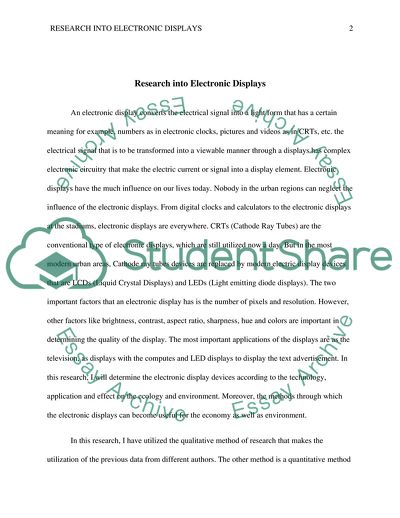Cite this document
(Electronic Displays: LCDs and LEDs Coursework Example | Topics and Well Written Essays - 1750 words, n.d.)
Electronic Displays: LCDs and LEDs Coursework Example | Topics and Well Written Essays - 1750 words. https://studentshare.org/technology/1764323-research-into-electronic-displays
Electronic Displays: LCDs and LEDs Coursework Example | Topics and Well Written Essays - 1750 words. https://studentshare.org/technology/1764323-research-into-electronic-displays
(Electronic Displays: LCDs and LEDs Coursework Example | Topics and Well Written Essays - 1750 Words)
Electronic Displays: LCDs and LEDs Coursework Example | Topics and Well Written Essays - 1750 Words. https://studentshare.org/technology/1764323-research-into-electronic-displays.
Electronic Displays: LCDs and LEDs Coursework Example | Topics and Well Written Essays - 1750 Words. https://studentshare.org/technology/1764323-research-into-electronic-displays.
“Electronic Displays: LCDs and LEDs Coursework Example | Topics and Well Written Essays - 1750 Words”. https://studentshare.org/technology/1764323-research-into-electronic-displays.


